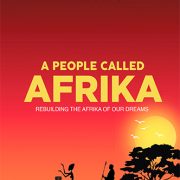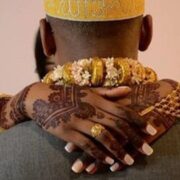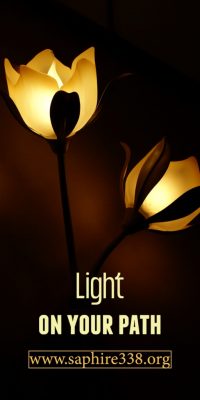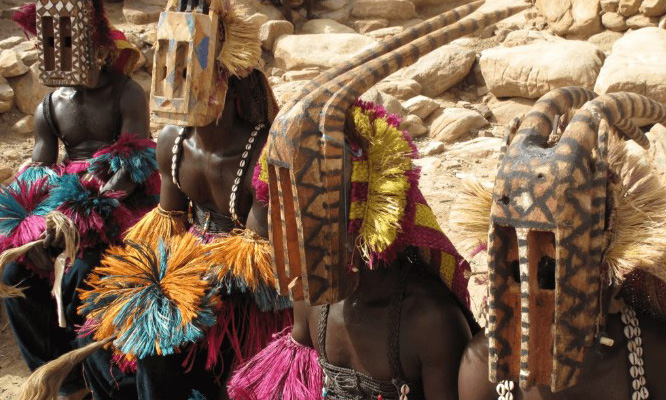
Dr. Bhengu is an Independent Researcher on Afrikan philosophy, Afrikology…
Decoding The African Mystery Tradition
Written by L. Scranton. Courtesy of Mfuniselwa Bhengu
Laird Scranton is an independent software designer, from America, who became interested in Dogon mythology and symbolism in the early 1990’s. The Dogon are a modern-day African tribal people who live along the cliffs of the Bandiagara escarpment, south of the Sahara desert, near Timbuktu and not far from the Niger river in Mali, West Africa. The tribe consists of approximately 100,000 people in 700 villages.
Highly suggestive of an ancient lineage for the Dogon people are their religious rituals and practices which in key ways mirror those of Ancient Egypt, on the one hand, and Judaism on the other. Furthermore, the Dogon myths are expressed in words and symbols that are shared with the Amazigh, the tribes of hunters who lived in Egypt prior to the beginning of the First Egyptian dynasty. Perhaps most significantly, Dogon mythology is documented in tribal drawings that often take the same shape as the ancient pictograms used in Egyptian hieroglyphic writing.
Prior Structures of Civilized Knowledge
Although some will think it absurd to suggest that the people of 3400 BC were learning theories of advanced science at a time when they hardly had mastered the skills of stone masonry, what is believable, for Scranton, is that the structures of civilized knowledge were presented to mankind in a form that would orient us towards a larger understanding of the sciences and that generous hints about the origins of the universe, the composition of matter, and the reproductive processes of life were incorporated into this framework.
It is distinctly possible, then, that there is new science to be found in the Egyptian hieroglyphs, those remarkable 5,000 year old drawings whose mysteries could well provide important clues to modern scientists. Moreover, the very existence of those astonishing symbols among the texts of ancient societies calls for an adjustment in the way we understand and interpret our history. Moreover who were those “agents of god”?
Themes of the Ancient Creation Stories
The oldest creation stories center on a surprisingly constant set of themes. If we look at the themes that appear in the Dogon religion, we find that they can be grouped into two distinct storylines, which Scranton calls the surface story and the deep story. The surface story line included some or all of the following : first, a self created god emerges from the waters of chaos. The Dogon called such Amma, and the Egyptians Amen (Atum). This self-formed god/goddess creates four sets of masculine-feminine pairs. In Heliopolis these eight, overall, constituted the so called Ogdoad : Shu and Tefnet, Geb and Nut, Isis and Osiris, Seth and Nephythis.
These take the role of educators who teach the skills of civilization to civilization to humankind and sometimes also serve as founding members of the original families of mankind.
The deep story includes more intimate details. Typically the unformed universe is described as an egg that contains all of the seeds, or signs of the world. In some cultures these signs are represented as the letters of the alphabet, but in others they are simply identified as the seeds of the world to come. Implied throughout are a basic set of principles. The first is that of twin-ness. For the Dogon, the universe actually consists of two creations, one that we can see and one that we cannot. The same pattern can be seen in the dominant Egyptian creation traditions of Heliopolis and Hermeopolis, both of which describe an initial set of emergent godlike entities created in pairs.
A second guiding principle is the pairing of male and female. The self-created god, in many societies. Is both male and female, such as Atum (or Amen) in Egypt, followed by four male and female pairs, in the pattern of both the Ogdoad of ancient Egypt, and our own spectrum of integrators, so to speak. We can see this pairing also reflected in the traditional organization of Egypt into two lands, one called Upper Egypt and the other Lower Egypt. In modern Dogon culture, a plot of land is divided between those who farm and others who forge the tools and implements of farming. The earliest creation stories, as such, place recurring emphasis on the numbers two and eight.
A third concept of great importance to the earliest religions is the idea of the cardinal points of the Earth – north, south, east and west. Such can be seen, for example, in the four corners of the Jewish tallis (prayer garment), or the Great Pyramid of Egypt, deliberately aligned with the four cardinal points.
Dogon Symbols and Meanings
Amma or Amen (Atum) then represents, as it were, the first living cell, which emerged from the waters of the ancient ocean, described by modern scientists as a kind of primal soup. A pairing is then formed by mitosis, a form of cell division. This process of splitting results in a matching pair of new cells, each with the same chromosomal makeup as the original cell.
The eight ancestors of the Dogon, much like the first eight emergent Egyptian gods and goddesses, could be seen as an example of the more complicated reproductive process called meiosis. The Dogon describe the journey of the eighth ancestor as entering the womb of the earth, and it is a journey each of the eight ancestors must make during the process of transformation. Once inside the womb, the eighth ancestor gains knowledge of the Word of the female Nummo, which with the male Nummo takes the shape of a spiraling coil. This coil is the textbook image of the DNA molecule – the double helix – that we know is the medium of transmission for the genetic “word”.
Dogon Parallels to the Big Bang
Bummo to Toy : Grounding to Effect
Citing the book The Pale Fox, by the French anthropologists Griaulde and Dieterlen, Stanton describes a basic approach to the act of creating that is defined within the framework of Dogon mythology. This approach includes four phases or stages, and, for the Dogon, applied to any creative project, which can be aligned with our integral rhythm :
– In the first of these an idea is conceived, which the Dogon call Bummo. At this “grounding” stage the project only exists in signs or seeds.
– In the second stage, called the Yala, the “emergent” project is conceived in broad strokes that indentify the boundaries of the object to be created, the “mark” or “image” of the thing in dotted lines.
– The third “navigational” stage refines the image of the thing to be created, that is the Tonu, a figure, diagram, ..a schematic outline of generally separated graphic elements; it is the sketch, the rough draft of the thing to be presented.
– The fourth and final stage of the “effectively” creative act, termed Toy, is to produce the finished image of the thing to be created. It is also the thing itself.
The Four Quantum Forces
Further examining the Dogon symbols, now as they relate to quantum physics, Scranton notes that the four creative stages – bummo, yala, tonu and toy – might have a bearing on quantum physics, in relation to the four types of force-carrying particles the physicist Stephen Hawking describes in his Brief History of Time :
.. The first category is the gravitational force. The force is universal, that is every particle feels the force of gravity, according to its mass or energy .. grounding
The next category is electromagnetic force, which interacts with electrically charged particles like electrons .. The electromagnetic attraction between negatively charged particles and positively charged protons in the nucleus causes the electrons to orbit the nucleus of the atom .. emergence
the third category is called the weak nuclear force .. exhibiting a property known as spontaneous symmetry breaking. This means that what appear to be a number of completely different particles at owe energies are in fact found to be all the same particle, only in different states .. navigation.
The fourth category is the strong nuclear force, which holds the quarks together in the proton and neutron, within the nucleus of the atom .. effecting.
The gravitation is so weak and undetectable as to be a seed (bummo – grounding). The electromagnetic force defines the outline of the object (yala – emerging). The weak nuclear force at states of high energy refines the component particles (tonu – navigating) and the strong nuclear force binds or draws the atom (toy – effecting).
Dogon Parallels to String Theory
String theory came to the forefront of scientific thought in the early 1980’s, whereby particles were conceived as vibrating, oscillating, dancing filaments. Just as the strings of string theory, as such, are thought to give rise to the four quantum forces, so the Dogon tell us that the spider gives birth to four seeds, or sene na. As we see from The Pale Fox :
The four branches of the “sene na” in which the spider was working will bear fruit .. The first seed caught by the sense was that of the “mono”, a word meaning “to bring together” .. the second sene “gommuzo” or “bumpy”; the third sene “benu” or “stocky”; and sene “urio” – its “head”. The four “sene” contained the four elements – sene na (water); sene gommuzo (air); senne benu (fire) and sene urio (earth).
Dogon Parallels to Egyptian Mythology
The Heliopolitan Cosmology
The many persistent similarities between Dogon and Egyptian religious symbols and lifestyles lead to a natural suggestion that modern Dogon society could actually represent a modern remnant of ancient Egyptian culture. For Serge Sauneron in his book The Priests of Ancient Egypt :
The Egyptians never considered their language – that corresponding to the hieroglyphs – as a social tool; for them, it always remained a resonant echo of the vital energy that had brought the universe to life, a cosmic force. Thus study of this language enabled them to “explain” the cosmos.
Moreover, in A History of Ancient Egypt, the French Egyptologist Nicholas Grimal
provided a description that calls to mind the surface storyline of the Dogon :
The main system of cosmology was developed at Heliopolis, once the ancient holy city where the pharaohs came to have their power consecrated. Not only was the Heliopolitan cosmology the earliest, but it also provided inspiration for Egyptian theologians throughout later periods of history. In the beginning was Nun, often translated as “chaos”, containing the potential for the sees of life. It was from this chaos that the sun emerged. It appeared on a mound of earth covered in pure sand emerging from water, taking the form of a standing stone, the “benben”, the focus of a cult at Heliopolis, considered to be the original site of creation.
We know, moreover, that the first emergent gods of the Heliopolitan tradition were Geb, Nut, Shu and Tefnut – respectively associated with earth (Geb), water (Nut), wind (Shu) and fire (Tefnut), followed by Isis and Osiris, Seth and Nephythis, altogether constituting the eightfold Ogdoad. With Neith as the mother goddess, moreover, we therefore have at the very foundation of Egyptian religion the unmistakable symbol, according to Scranton, for a primordial thread symbolizing the four categories of quantum particles, expressed in virtually the same terms as that of the Dogon.
Releasing Gene-ius
For English Egyptologist Wallis Budge moreover, in his Legends of the Egyptian Gods, we find the ancient Egyptian equivalent of creation of matter, known as “laying the foundations”. As such,
• Firstly the hieroglyphic counterpart of the Dogon word bummo, the act of conception, is bu maa, a synonym for maat, based on the roots word maa, which means to “perceive – our grounding
• Secondly, the Egyptian counterpart of the Dogon yala is ahau, which means “delineation of posts or boundaries” – our emergence
• Thirdly, the Dogon tonu, an “approximation of what is to be created” is the Egyptian teni, which means “to estimate” – our navigation
• Finally, the Dogon creational stage, toy, is tematu, which means in ancient Egyptian “complete”, the same notion as the God Atum (to be complete), which for us is transformative effect.
These four phases, in turn, can be related the four quantum forces : the gravitational force (grounding), the electromagnetic force (emergence), the weak nuclear force (navigation), and the strong nuclear force (effect).
Subscribe now for updates from Msingi Afrika Magazine!
Receive notifications about new issues, products and offers.
What's Your Reaction?
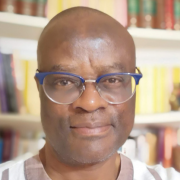 PIN IT
PIN ITDr. Bhengu is an Independent Researcher on Afrikan philosophy, Afrikology and Egyptology. He is an established and experienced author, self-publisher and managing director of Phindela Publishing Group & Editor-in-Chief of INQABA Journal, a quarterly publication that specializes on Afrikology. He describes himself as an Afrikan of Nguni (Zulu) extraction, but then a global citizen. Black, but being in total fusion with the world, in sympathetic affinity with the Earth... “I am black not because of a curse, but because my skin has been able to capture all cosmic eluvia. I am truly a drop of the sun under the earth.” He says.









